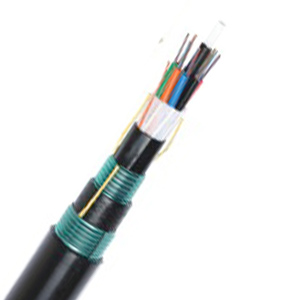
Fiber optic cables are advanced data transmission mediums that use light to carry information through thin strands of glass or plastic fibers. They have become a popular choice for high-speed internet, telecommunications, and data transfer because of their ability to handle large amounts of data at lightning-fast speeds.
Applications of Fiber Optic Cable
Fiber optic cables are widely used in several industries, including:
- Telecommunications: Fiber optics are the backbone of modern high-speed internet and telecommunication networks. They provide faster internet speeds and better bandwidth compared to traditional copper cables.
- Medical: Fiber optics are used in medical devices like endoscopes to help doctors view internal body parts during surgeries.
- Data Centers: These cables help transmit data quickly and efficiently across large data centers, ensuring reliable and fast data transfer.
- Broadcasting: Fiber optic cables are used in broadcasting and media services to transfer large amounts of video and audio data.
Advantages of Fiber Optic Cable
High Speed
One of the primary advantages of fiber optic cable is its ability to transmit data at extremely high speeds. Fiber optic cables can handle much more bandwidth than traditional copper wires, making them the go-to option for high-speed internet providers and data-heavy industries.
Long Distance Transmission
Fiber optic cables are less susceptible to signal loss over long distances. Unlike copper cables, which suffer from attenuation over long runs, fiber optics can transmit data over several kilometers without requiring signal boosters.
High Bandwidth
Fiber optic cables provide much higher bandwidth than copper cables, allowing for the transmission of more data at a faster rate. This makes them ideal for applications that require significant data transfer, such as streaming, gaming, and large-scale data communication.
Immunity to Electromagnetic Interference
Because fiber optic cables transmit data using light, they are immune to electromagnetic interference (EMI) and radio frequency interference (RFI), ensuring a more stable connection in environments with high electrical interference.
Security
Fiber optics are more secure than copper cables because they are less susceptible to tampering and eavesdropping. Any attempt to tap into the fiber optic cable would cause the signal to degrade, making it easier to detect breaches.
Disadvantages of Fiber Optic Cable
Cost
The initial cost of fiber optic cable installation can be higher than copper cables. This includes the cost of the cables themselves, installation, and the need for specialized equipment. While the long-term benefits outweigh these costs, the upfront investment can be a barrier for some businesses.
Fragility
Fiber optic cables are more fragile than copper cables because they are made of glass or plastic. They can be easily damaged during installation or by physical impacts, making careful handling essential.
Specialized Installation and Equipment
Fiber optic cables require specialized knowledge and equipment for installation and repair. This can lead to higher costs for installation and maintenance when compared to traditional copper wiring.
Limited Power Transmission
Unlike copper cables, fiber optic cables cannot transmit power. This means that devices connected by fiber optics will still need a separate power source.
Conclusion
Fiber optic cables offer a range of advantages, including high speed, long-distance transmission, high bandwidth, and immunity to electromagnetic interference, making them ideal for modern communication and data transfer needs. However, they come with disadvantages such as higher initial costs, fragility, and the need for specialized installation. Despite these drawbacks, fiber optic technology is becoming increasingly popular due to its superior performance and ability to meet the growing demands for faster and more reliable data transmission.

